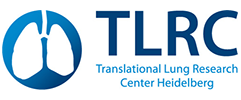![[Translate to English:] [Translate to English:]](/fileadmin/user_upload/Aktuelles/20201112_CT-Aufnahme_Oyunaa_v_Stackelberg_1268x952.png)
Virtual workshop of the DZL-Platform Imaging on COVID-19 and artificial intelligence
This year’s workshop of the DZL-Platform Imaging was held as a virtual event on November 12. About 60 experts in the fields of lung imaging and data analysis gathered for a videoconference to exchange on key topics such as COVID-19 and artificial intelligence. In 13 talks speakers from different research institutions informed on ongoing projects, sparking discussions and inspiring future collaborations between the researchers.
The key role of lung imaging in COVID-19 research
In the first part of the workshop, eight speakers informed on the versatile applications of imaging techniques in diagnosing and researching COVID-19.
When it comes to the transmission of COVID-19 between humans “aerosols” and “super-spreaders” are often discussed. Dr. Ottmar Schmid, Head of the research group “Pulmonary Aerosol Delivery” at the Comprehensive Pneumology Center (CPC-M) explained how light sheet fluorescence microscopy is used in preclinical research to visualise which parts of the lung are penetrated by aerosols and under which conditions large amounts of potentially virus-laden aerosols are exhaled by infected people and thus might contribute to super-spreading.
In severe cases of COVID-19 the lung tissue of patients is undergoing pronounced structural change. A team of physicians at the DZL-sites Biomedical Research in End-stage and Obstructive Lung Disease Hannover (BREATH) and Translational Lung Research Center Heidelberg (TLRC), applies state-of-the-art technology to visualise these changes in the organs of deceases patients. Christopher Werlein (BREATH), Prof. Dr. med. Danny Jonigk (BREATH) and Willi Wagner (TLRC) presented impressive images created using cross-scale Phase-contrast X-ray imaging. In collaboration with an international team and the European Synchrotron Radiation Facility (ESRF) in Grenoble, France, the researchers acquired three-dimensional imaging data of whole lungs. They were able to visualise detailed patterns of tissue damage at a resolution of one millionth of a meter.
In the clinical routine, imaging techniques can accelerate the diagnosis of COVID-19. Assistant physician Dr. Nikola Fink (CPC-M) explained how computer-tomography (CT) is used to distinguish patients with COVID-19 from those with influence pneumonia. At times of high numbers of emergency patients, CT-data allows decisions on further treatment of the patients to be made as quickly as possible.
During the course of the pandemic, countless imaging data and associated clinical parameters of COVID-19 patients are generated. Several approaches exist to facilitate the exchange of this data between hospitals for research and treatment purposes. Three of them were introduced in further talks by Dr. Oyunaa von Stackelberg (TLRC), Dr. Balthasar Schachtner (CPC-M) and Dr. Hinrich B. Winther (BREATH). The University Hospital Heidelberg for example, is part of the BMBF-funded Radiology-Platform RACOON (Radiological Cooperative Network). In this network of all German university hospitals X-ray images of COVID-19 patients are collected and analysed using artificial intelligence. Further, the CPC-M is working on a web-application collecting data on the treatment course of COVID-19 patients to facilitate their exchange between hospitals.
Artificial Intelligence in the fight against Lung Diseases
Artificial intelligence (AI) and machine learning for the analysis and processing of lung imaging data were addressed in seven talks during the second half of the workshop. Scientist and physicians introduced different projects on training computers to recognise patterns in imaging data and to make decisions (e.g. a diagnosis) with minimal human intervention.
Prof. Dr. Matthias Heinrich, head of the group Medical Deep Learning at the Institute for Medicinal Informatics at the University of Lübeck explained how machine learning will help to improve the diagnosis of lung diseases such as COVID-19 and COPD based on CT-scans.
Michael Gerckens, doctoral candidate and physician scientists (CPC-M) introduced a technique for the analysis of imaging data of fluorescence microscopes, which has already been used in the search for novel drugs for the treatment of lung fibrosis.
Prof. Dr. Alexander Heisterkamp, head of the group Biophotonics at the Institute for Quantum Optics at the Leibniz University Hannover explained how his team uses AI to optimise the quality of endoscopic images.
Dr. Sebastian Marwitz, research associate at the Airway Research Center North (ARCN), talked about how lung tissue is examined using multiplexed-immunofluorescence and how AI is used to analyse the imaging data to understand lung diseases better.
One day, AI could be able to classify different subtypes of lung cancer in microscopic images of tissue biopsies. This vision might soon become reality thanks to the work of senior physician PD Dr. Mark Kriegsmann (TLRC).
Postdoctoral researcher Dr. Andreas Voskrebenzev (BREATH), spoke on the application of AI in processing data of contrast-free magnetic resonance tomography in significantly shorter time to speed up the time from imaging to diagnosis. The method, which is called Phase-Resolved Functional Lung (PREFUL) Imaging, will soon be applied in clinical lung imaging.
The goal of the work of senior physician Dr. med.Mark Wielpütz (TLRC) is to use AI for the diagnosis of comorbidities using CT-scans of lung, abdomen and pelvis. His team works on computer algorithms which reliably detect comorbidities or risk factors based on CT scans. The system should help identifying comorbidities earlier and to take them into account in the treatment plan.
The discussion at the end of the workshop was also used for an exchange on possible new collaborations between the different sites. The next workshop of the platform imaging is going to take place in 2021.
/ TLRC - Doreen Penso Dolfin

